Minimalist vs maximalist running shoes
We put minimalist vs maximalist running shoes through their paces to help you choose your next shoes
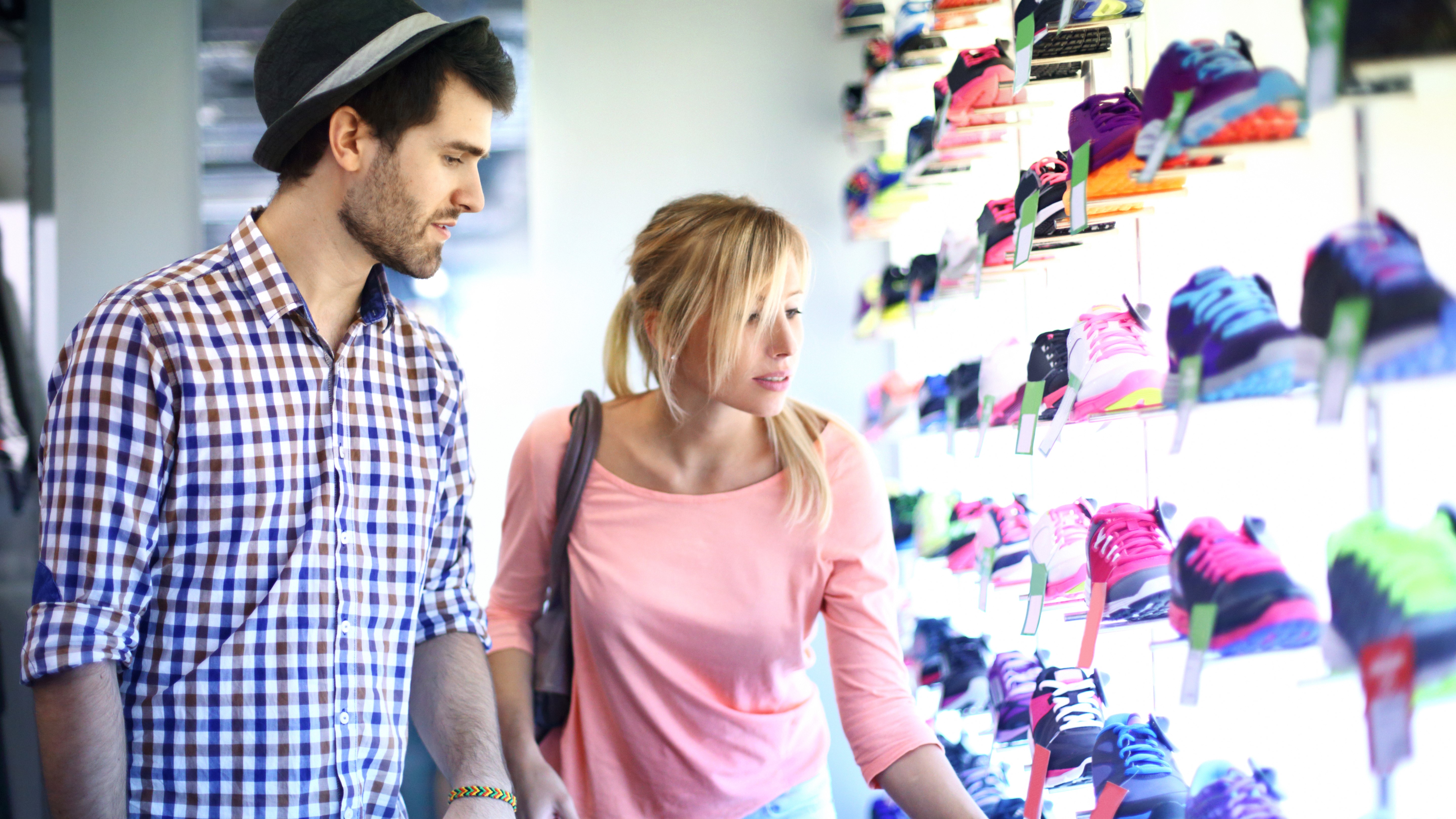
Recent history has seen a bit of a debate arise in the world of running shoes. The early 2000s saw the standard running shoe featuring a bit more cushioning, higher drop and arch support. Running purists argued that all this support essentially weakens your feet, and the backlash bore the so-called barefoot running movement. Minimalist running shoes appeared to be more than just a passing fad when the New York City Marathon saw a jump in participants wearing minimalist running shoes in 2010.
A bit of controversy ensued – in part due to studies suggesting that minimalist shoes lead to more injuries and in part because people just found those FiveFingers shoes offensive to look at – and a few years later, the counterculture maximalist running shoes emerged with big, bouncy soles. Those runners who talk a lot about things like 'trail feel' scoffed. Runners who had always suffered from impact-related injuries rejoiced.
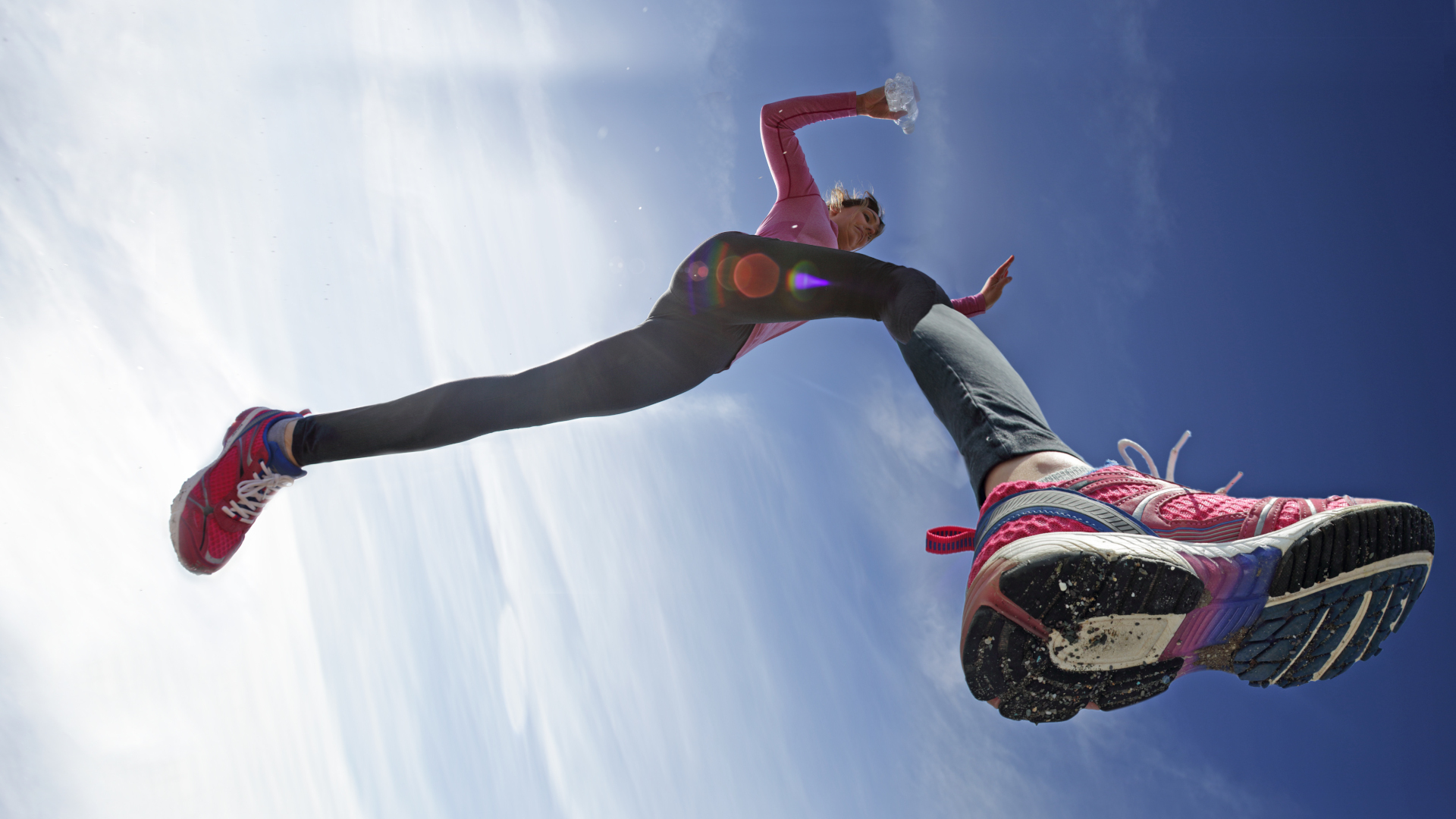
But minimalist shoes have started to take a bit of a backseat in recent years, and the soles on the trails and races seem to be getting cushier. The winner and runner up of the 2021 New Yoga City marathon were both wearing shoes with a 39mm stack height under the heel. That’s cushy. Are maximalist running shoes having their heyday? Do you want all that technology and control over your stride, or should you let your body do the talking? We put the two through their paces in our comparison of minimalist vs maximalist running shoes to help you choose.
Minimalist vs maximalist running shoes: what are they?
The term minimalist running shoes broadly describes running shoes that have less cushioning in the midsole, a low or zero drop and no arch support. These types of shoes are believed to help you run with a more natural gait and offer more sensation of the ground beneath your feet. These shoes may be lighter in weight – though not always, as you’ll soon discover – and may look just like an average trainer, a sandal or even come in the separate toe pocket variety as in Vibram’s FiveFingers V-Trail 2.0.
Maximalist running shoes are almost the exact opposite. Though they also tend to feature zero or low drop, the similarities end there. These shoes feature lots of cushioning in the midsole, higher sidewalls and may incorporate rocker technology to encourage you to push easily off your toes. If you look at a pair of running shoes and the sole looks huge, it’s likely a maximalist shoe. The leading brand of maximalist running shoe is almost certainly Hoka, known for its big, bouncy shoes like the Tecton X.
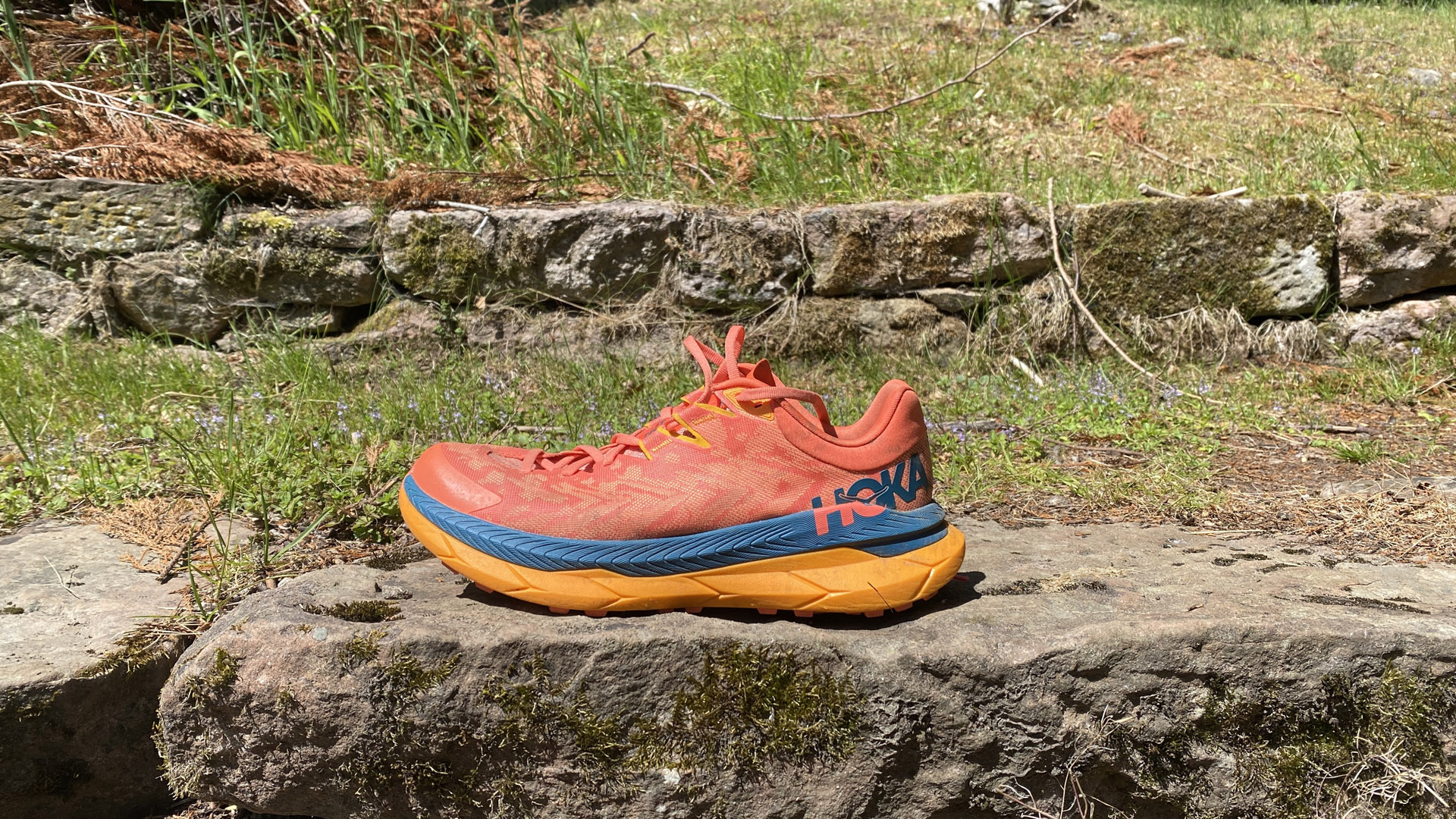
Minimalist vs maximalist running shoes: weight
Because they’re more substantial and appear bigger, we expected maximalist running shoes to be significantly heavier than their minimalist counterparts, but when we pulled out the scales, we were surprised to discover how negligible the difference appears to be. Trail running shoes are typically the heaviest on the market thanks to their chunky soles, and the best trail running shoes on our list usually weigh in at around 10.5oz/300g per shoe. But when we compared that to the best barefoot running shoes we’ve tested, we found that many of the minimalist shoes were just as heavy, or no more than an ounce per shoe lighter. So when it comes to weight, it really depends on the shoe itself, and then you’ve got the question of how much the weight of your shoes actually matters?
There is lots of research that shows that a heavier shoe degrades your running economy, such as a 2016 study that showed your economy increase by 1 - 3% per 100g of shoe in a clinical (treadmill) setting, but in the field, there are other factors that could affect that outcome, such as your weight and running style. If you’re a marathon runner, there’s a good chance that you want every advantage you can get and many successful marathon runners in recent years made the podium while wearing a lightweight Nike Vaporfly, which tips the scales at just 6.7oz/190g per shoe (for a man’s size 9). But of course, you also need a substantial long distance shoe for all those miles so you might not be looking for the thinnest midsole around. Meanwhile, if you’re a more casual runner, putting in 1% more effort to your regular 5k or 10k might not seem like much of a deciding factor at all.
Advnture Newsletter
All the latest inspiration, tips and guides to help you plan your next Advnture!
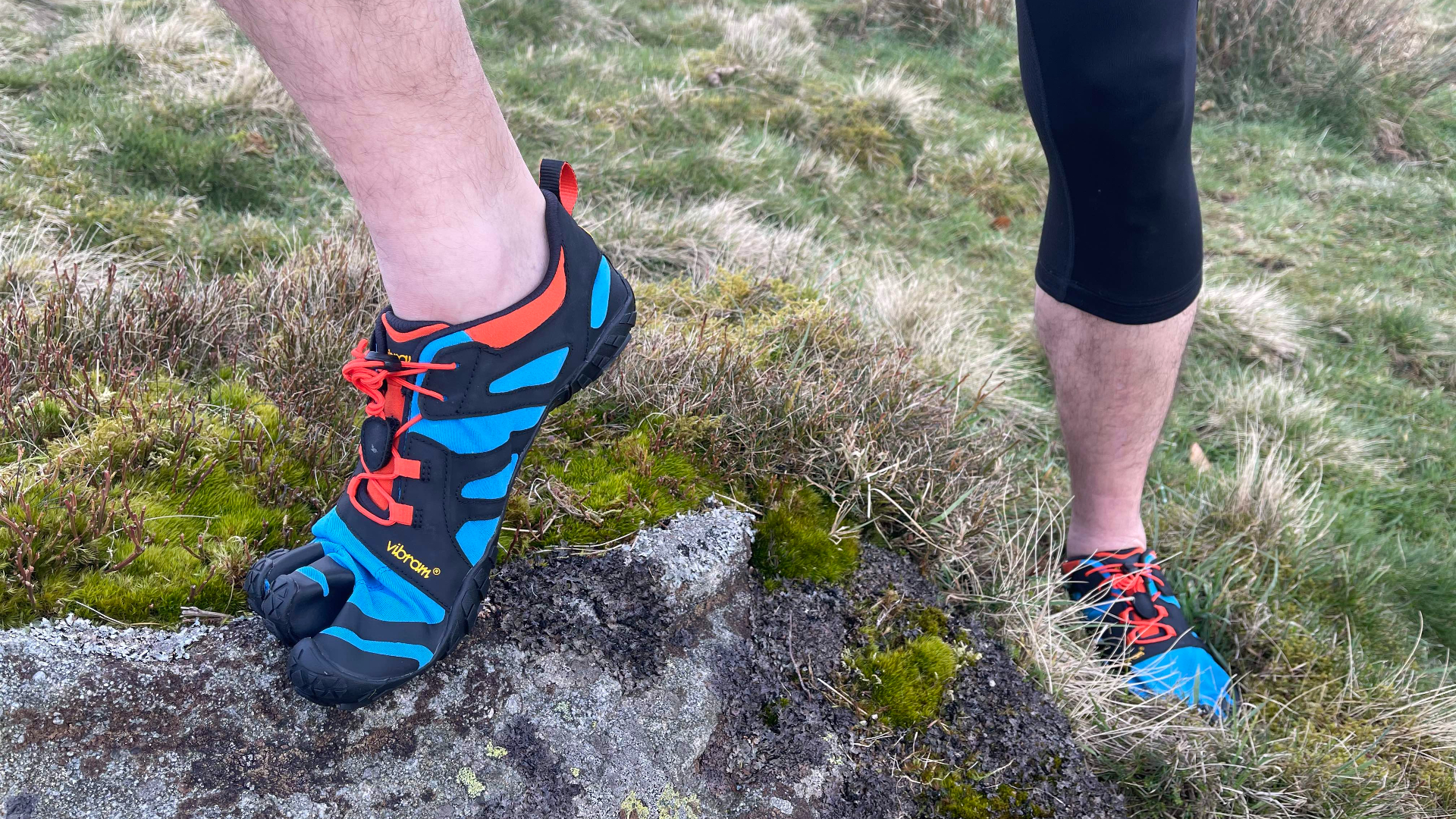
Minimalist vs maximalist running shoes: stack
Stack refers to how high above the ground your foot will sit in the shoe, and essentially describes how much cushioning and other material the midsoles of your running shoes have. Minimalist shoes tend to feature a low stack, so there isn’t much cushioning between your foot and the ground. For long distance runs and rocky trails, some runners would find this uncomfortable, but the upside of it is that you can sense the trail better underfoot, which can make you feel more connected to the trail, and respond to uneven surfaces to help you maintain your balance.
Meanwhile, maximalist running shoes tend to have lots of cushioning for a plush, bouncy feel and some even have carbon plates in them. You’re not likely to be able to feel much of the trail at all underfoot, and for many runners this equates to comfort, but those extra millimeters may also translate into less stability when you’re running on technical terrain. This one certainly comes down to a cross between personal preference, and the type of terrain you plan to tackle.
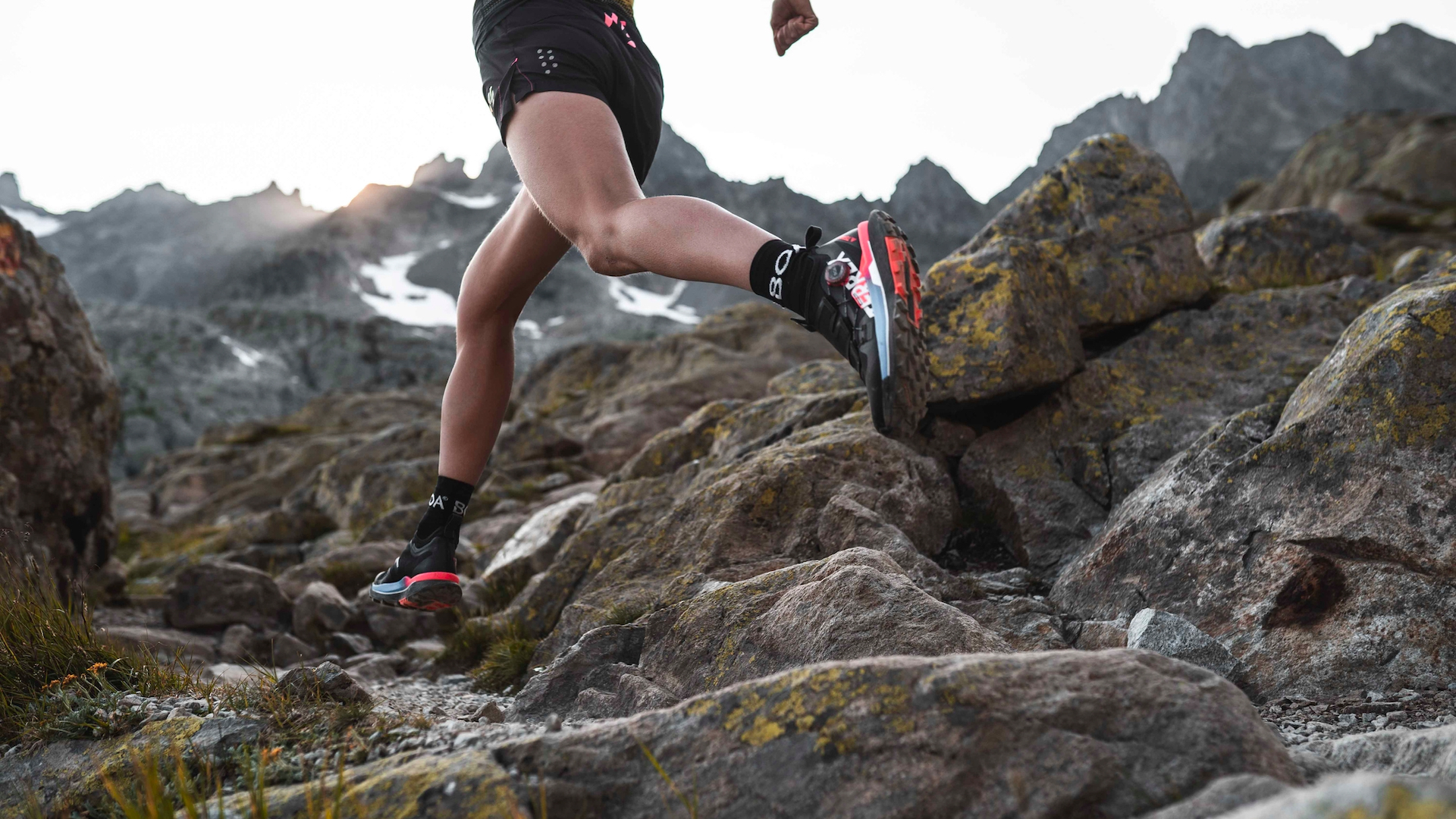
Minimalist vs maximalist running shoes: stabilization
So far, it might appear as though minimalist shoes offer better stability. Their thinner midsoles keep you closer to the ground, whereas the added height of maximalist shoes might feel like running in platforms if you’re not used to it. No problem on the roads, but trickier on the trails. However, the low profile of minimalist shoes is designed to influence your running gait as little as possible, meaning they don’t add anything to your stability. The theory is that they encourage you to strengthen your feet and lower leg muscles to develop your own stability.
Maximalist running shoes, meanwhile, might have a higher stack, but they also tend to have higher sidewalls, which means your foot is actually better nestled into the shoe. This provides more stability, and if your maximalist shoes have carbon plates, the stiffer midsole is designed to provide more ankle stability and keep your toes straight to improve running economy. Depending on the shoe, you might also have arch support. So while you might initially feel less stable in these shoes on a trail, they are probably influencing your gait more than a minimalist pair of shoes.
Whether or not all this translates into better injury protection and stronger feet is unclear. There are studies that seem to show more injuries are associated with minimalist running shoes than with neutral shoes, and those that hypothesize that minimalist shoes strengthen your arches, however research on maximalist shoes is lacking.
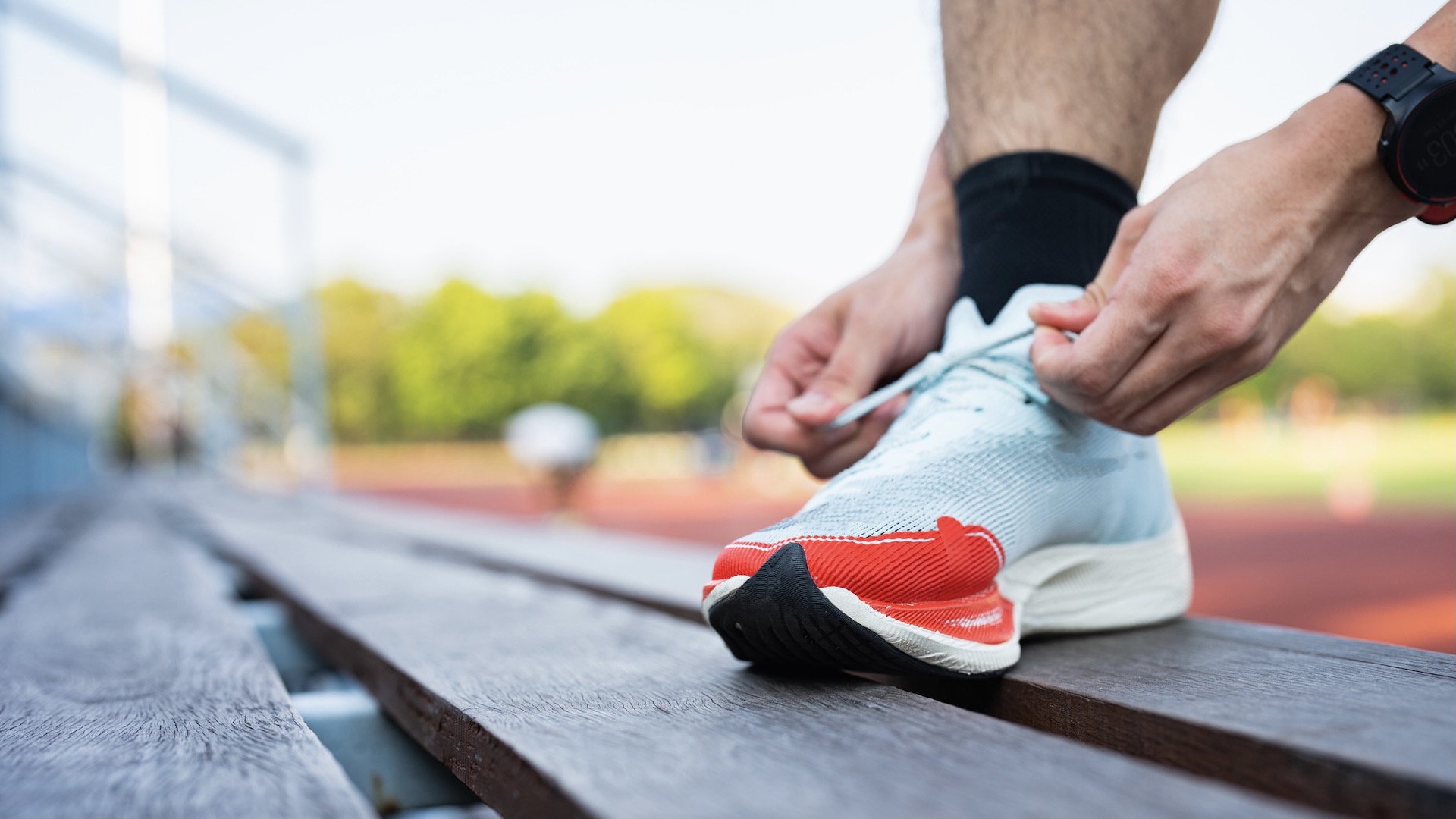
Minimalist vs maximalist running shoes: protection
Finally, because minimalist running shoes are designed to have as little influence as possible over your gait, the soles are not designed to absorb much of the shock of each step, while the uppers tend to be extremely light, often a single layer of fabric that has loads of flex. This means your foot gets to move naturally, but of course may not feel so great if you bash up against a rock, and the previously cited studies suggest there’s more shin and calf pain in using these shoes.
Maximalist running shoes appear to absorb shock better, and even when lightweight, usually have a bit of a sturdier upper, often with a big toe guard, that will provide some protection against hazards on the trail.
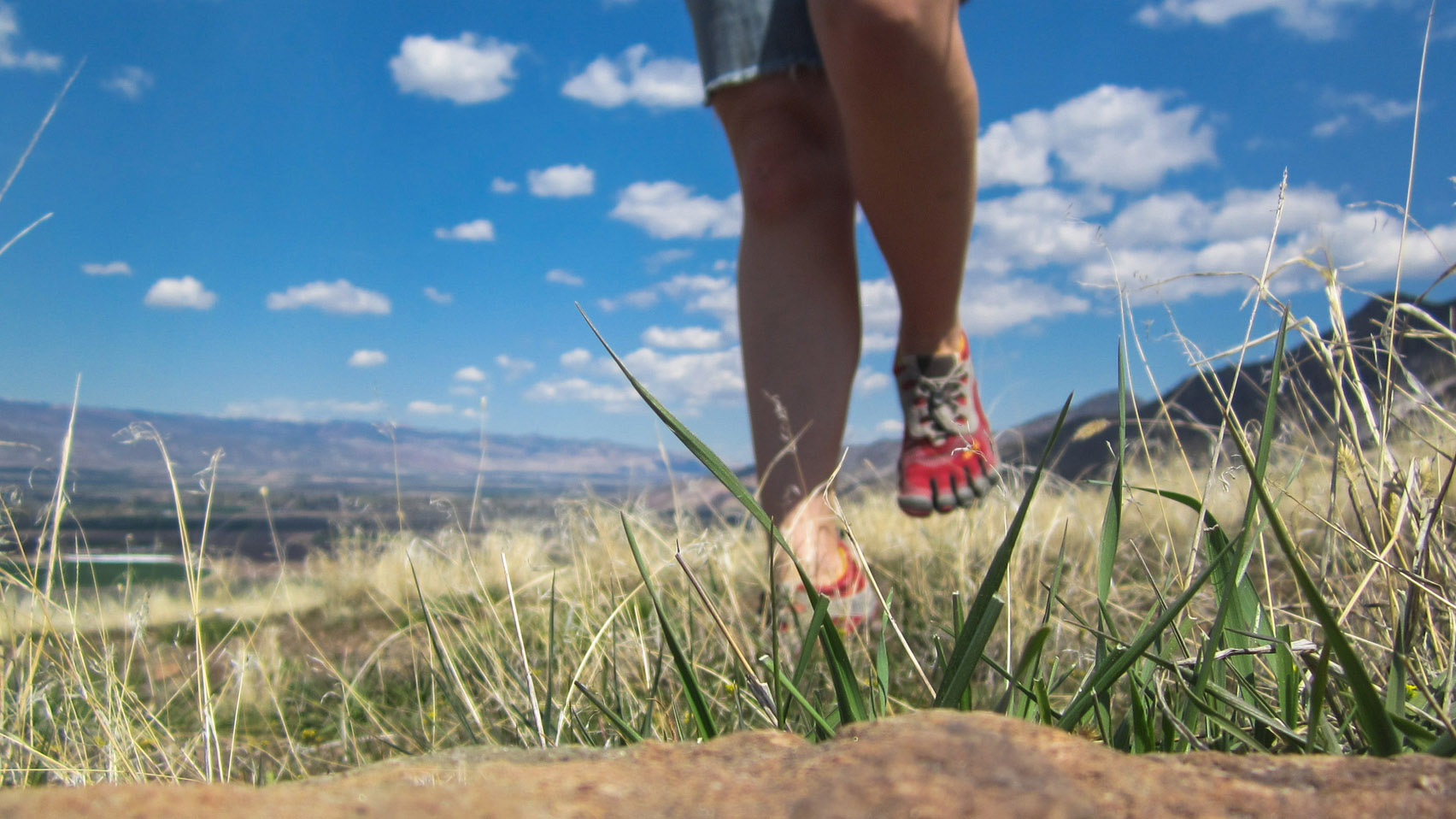
Minimalist vs maximalist running shoes: the verdict
When deciding between minimalist and maximalist shoes, there are really three things you need to consider:
- What type of surface you’re running on.
- How long you’re running for.
- Your running gait type.
For example, if you’re doing long distance trail runs and you overpronate, you probably won’t benefit from a minimalist shoe. But if you don’t need a lot of support, aren’t running for long distances and prefer a flat surface, you might like the more natural feel of a minimalist shoe. Finally, remember that you don’t have to go to either extreme – neutral running shoes are still a thing.
The best approach is to get a gait analysis at your local running store, and go from there. And if you’re planning on making a switch in the type of running shoe you're using, the official advice is to do so slowly, alternating between the shoes for a while, in order to let your body adapt.
Julia Clarke is a staff writer for Advnture.com and the author of the book Restorative Yoga for Beginners. She loves to explore mountains on foot, bike, skis and belay and then recover on the the yoga mat. Julia graduated with a degree in journalism in 2004 and spent eight years working as a radio presenter in Kansas City, Vermont, Boston and New York City before discovering the joys of the Rocky Mountains. She then detoured west to Colorado and enjoyed 11 years teaching yoga in Vail before returning to her hometown of Glasgow, Scotland in 2020 to focus on family and writing.

